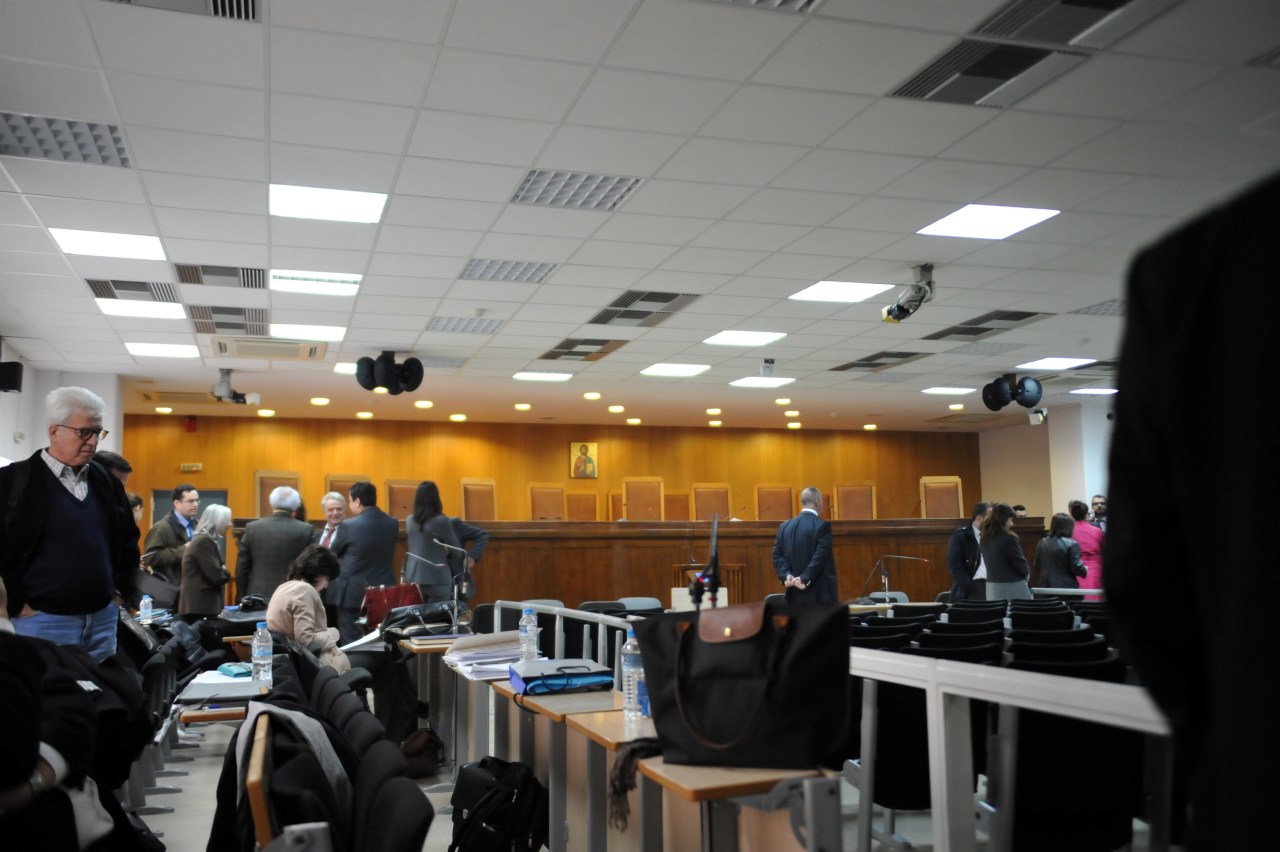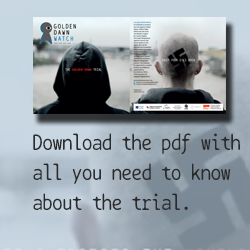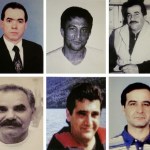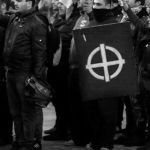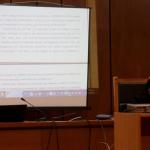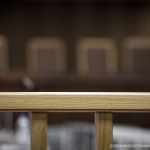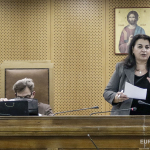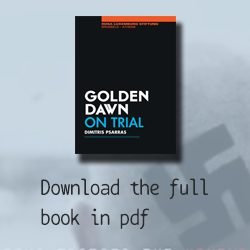The events are well known among journalists’ circles. Last Monday morning, as the
trial of the 69 Golden Dawn defendants began at the Korydallos Court of Appeal for
Felonies, the website of the Sunday newspaper “Proto Thema” (Πρώτο Θέμα)
published the list of the 131 witnesses for the prosecution, together with their details
and the particular issue on which they have been called to testify. The list was
republished across a network of web media channels, first among which, the website
of the (in)famous weekly newspaper “Stochos” (Στόχος), Golden Dawn’s media
organ.
With a carefully balanced statement, the Board of Directors of ESIEA (Journalists’
Union of Athens Daily Newspapers) stressed that “the publication of the names of
witnesses – defenseless citizens or immigrants for the most part – though not illegal,
might pose a threat to their person and expose them as targets of the assault division
of this criminal organization as, unfortunately, the assaults on the very first day of the
trial would seem to predict.”
The statement led to an outraged reaction on behalf of the journalists of “Proto
Thema,” who turned against the Board of ESIEA, protesting that the statement was an
attack on them and on their newspaper inspired by party or professional rivalry. Their
argument rests on the fact that the names of the witnesses (including those of
individuals who were not, in the end, called to testify) had already been published on
the Civil Action website on March 13 2015.
The accusation was followed by a letter signed by 13 court correspondents protesting
ESIEA’s statement, again by reference to Civil Action’s web posts, and underlining
their contempt for “any form of targeting, whoever its object may be and wherever it
may take place.”
Given we have a long judicial process ahead of us, it seems an apposite move to clear
things up from the offset. The efforts of those colleagues who published the witness’
names to find cover by recourse to the Civil Action webpage have fallen flat. The
specific post invoked has nothing to do with the disputed list.
As for the collegial solidarity demonstrated by other court correspondents: it is
entirely understandable. But they did not pause to consider the significance of all that
is at stake. Because the list published by “Proto Thema” is everything but a simple
transcription of the names of witnesses. In other words, they are misguided in
thinking that the newspaper “published the list of witnesses for the prosecution
exactly as these were delivered to the audience of a public trial.”
The published list includes details regarding the politics of the witnesses, labeling one
“an anarchist,” another “anti-establishment,” without any indication regarding the
source of this information or its relevance. And, typically: the Fyssas murder is
referred to as the “Fyssas case,” the attack on PAME (Workers Militant Front)
transcribed as the “scuffle in Perama,” the attacks on petty vendors are demoted to
“episodes,” while other attacks are characterized as “minor skirmishes.”
All these specifications betray the source of the list, as they emulate the line of the
Nazi organization itself, which seeks to dismiss the charges levied against it by
figuring them as random incidents and so to absolve its leadership.
Ethics
Of course it is within the right of the Golden Dawn defendants and their lawyers to
publicly make light of the charges under investigation. But what code of journalistic
ethics could possibly permit the names of witnesses to be supplemented by such
qualifications as “anarchist,” or “anti-establishment” or “member of an anarchist
squat,” even as the accusation itself speaks of “free social spaces” and as the victims
themselves claim no such properties?
But the damage is done, which is why the much-contested post was removed from the
“Proto Thema” webpage, an implicit admission of error.
Unfortunately, this is by no means the first time that this particular newspaper has
shown itself to be the press organ of Golden Dawn propaganda. Its ridiculous
reportage of “grandmas” escorted to ATMs by Golden Dawners is famous, as are its
plethora of reports on the “social work” and “modern lifestyle” of the organization.
As for the tactics adopted by the Nazi organization in order to rebuff the charges
levied against it, its habit of featuring the home addresses of the plaintiffs and
witnesses for the prosecution is telling. Court reporters themselves have first-hand
experience of the conditions of terror surrounding witnesses and litigants generated by
the organization each time it finds itself facing justice.
Journalists themselves number among the organization’s primary targets. Nikos
Michaloliakos’ “political” career began four decades ago with a similar attack: the
savage lynching of journalist democrats by a neofascist group at the funeral of
Evangelos Mallios, one of the military junta’s archtorturers. Michaloliakos was
arrested but never tried. The charges against him were dropped.
According to Golden Dawn’s co-founder, Ioannis Perdikaris, Michaloliakos
personally threw the well known journalist Nikos Kakaounakis into a lime pit around
the same time. And of course, there have since been many trials of Golden Dawners’
attempts to lynch “undesirable” journalists.
But even those (few) journalists who flatter Golden Dawn in the hope that by gaining
its favor they might become privy to some “exclusive” scoop, run the risk of being
exposed by the organization itself. In his apologia, Michaloliakos exposed a known
journalist as an informant for the organization who had, in September 2013, warned
Golden Dawn of the upcoming arrests.
In the early summer of 2014, during the last days of the pre-trial investigation, the
Leader pointed out known journalists to his lawyer as possible witnesses for the
defense, with the sole ostensible aim of exposing them and causing confusion. Given
this, it appears that the first challenge now facing the media is to not give in to threats
or to allow itself to be derailed by Golden Dawn’s expansive propaganda organs.

